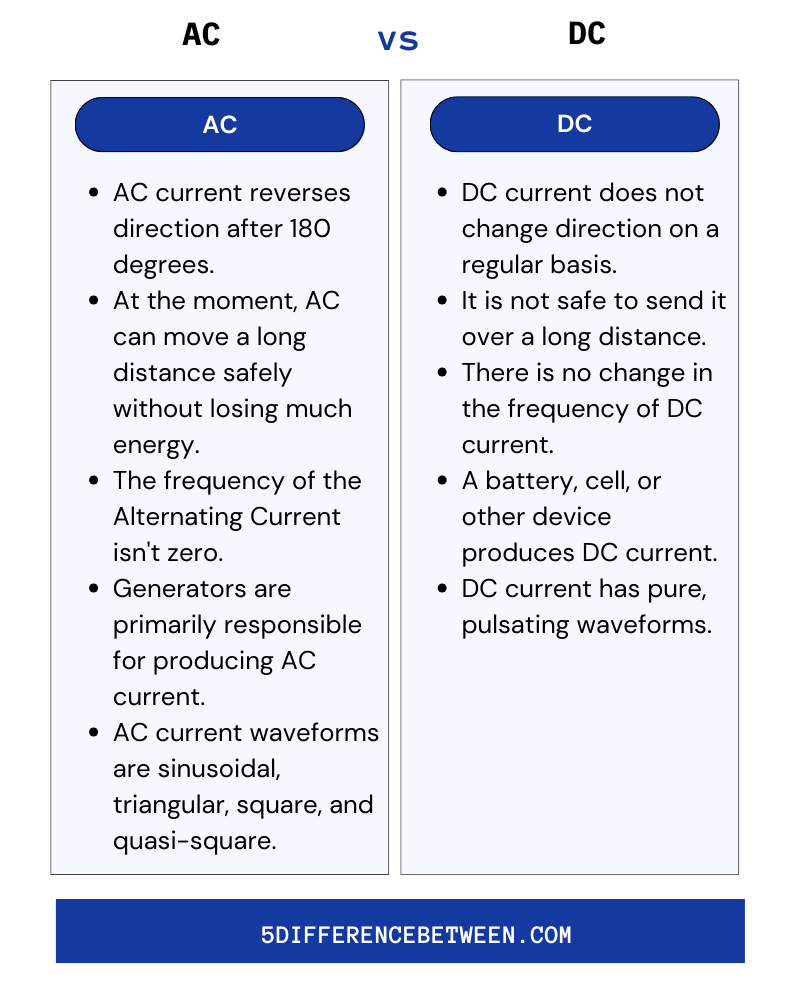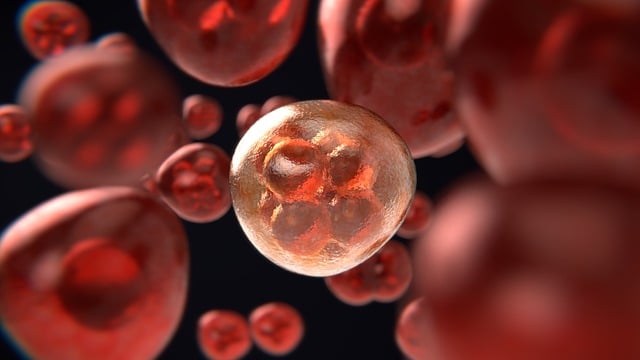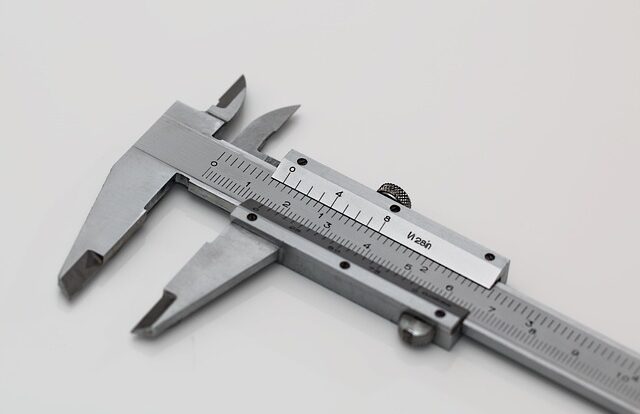The conducting materials have liberated electrons that migrate from one atom to the next when a potential difference is applied across them. In a closed circuit, this passage of electrons is known as current. On the basis of the direction of movement of electrons in a closed circuit, electric current falls into the category primarily of two types: alternating current and direct current.
One of the primary differences between alternating and direct current is that in alternating current, the polarity and magnitude of the current change at regular intervals, whereas in direct current, they remain constant. Some of these differences are discussed below.
What is Alternating Current
Alternating Current is what AC stands for. Alternating current, or AC, is a type of electric current whose strength changes all the time and whose direction changes from time to time. In practice, alternating current is generated by sources of alternating voltage, such as alternators and AC generators. The total quantity of time a waveform of alternating current takes to return to itself is known as the time period of the AC waveform.
Also Read > Difference Between Town and City
The frequency of an AC waveform is the rate at which the waveform repeats itself, or the number of cycles completed in one second. AC waveforms include sinusoidal AC, square wave, and triangular wave, among others. The AC is used extensively in our daily lives to power fans, bulbs, AC, laundry machines, etc.
What is Direct Current
Direct current (DC) is an electric current that only flows in one direction. It frequently consists of batteries, solar panels, and fuel cells and can power devices, recharge batteries, and start motors among other things.
DC has a voltage and current that stay the same over time. This means that the flow of electrons stays the same. This is different from alternating current (AC), which changes direction and has different levels of power and current. DC is often used in computer devices because it is simple and easy to work with. It’s easier to make and send because there’s no phase shift, and it’s also easy to change into other types of energy, like mechanical or heat energy.
AC Vs DC Current

As stated above, there are many differences between alternating current and direct current. The precise details of AC and DC can be found in these differences. Both kinds of electric current are used for different things.






